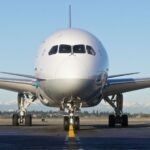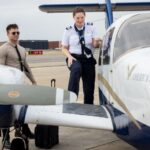By: Steven Daun, National Chief Pilot
When you mention aviation to the “nonpilot,” they automatically think of the airlines. This isn’t surprising since that is the only portion of our industry that most people see. It is no different when you discuss “careers in aviation.” Most people automatically think of an airline pilot.
Before we continue this discussion, you need to understand the numbers as they are staggering.
In 2019, there were 664,565 total certificated pilots in the United States. Of those, 127,100 were airline pilots. As you can see, airline pilots made up less than 20% of the total pilots in the U.S. To add some perspective to these numbers, there were approximately 315,00 total airline pilots in the world and just under an estimated 900,000 total pilots. This means that on a global scale, approximately 35% of all pilots are airline pilots.
The FAA reports that in 2019 there were 7,628 commercial aircraft in the U.S. fleet. They estimated that this number would grow to 9,421 by 2040. In contrast, there were 212,335 general aviation aircraft in the U.S. in 2019, and they estimated that this number would decrease to 210,380 aircraft by 2040.
Yes, these numbers are staggering, but they still do not tell the whole story.
Boeing has estimated that between 2020 and 2039, there will be a demand for approximately 763,000 pilots. Of these, 208,000 are projected for the U.S. alone. This is consistent with Airbus, who estimates that there will be a demand for 550,000 new pilots over the next 20 years to meet the demand of growing fleets.
FAPA estimated that over 2,000 airline pilots would retire in 2020 and they predict that the trend would continue over the next 5 years. Based on the number of airline pilots reaching the mandatory retirement age of 65, they are estimating this number to increase to 3,100 pilots retiring annually. By following the numbers, you can see that these trends will continue through 2034.
When you factor in the industry growth projections for general aviation pilots and aircraft, you can start to see the writing on the wall. Of course, you also need to add the drone industry into this equation. There are not enough pilots coming into the industry to support the demand.
I do not know of any other industry in the world that is facing these challenges. I also do not know of any other industry in the world that can present so many different career opportunities for a single discipline, that being piloting.
COVID-19 has affected the world and forced just about all businesses to become more efficient and to think outside of the box. Aviation is no different. Gone are the days of the superjumbo jets. This means that there will be a greater amount of smaller aircraft flying more routes, which means there will need to be more pilots to fly those airplanes. Because the airlines have cut back on many routes and equipment, many business peoples have opted to move to business aviation to transport themselves and their staff more efficiently. This has resulted in the growth of fractional ownership programs and charter companies. Drones have provided alternatives for a wide variety of past practices, from insurance adjusters climbing on roofs to package delivery.
As we get closer to 2021, the world is changing at lightning speed. Our industry has and always will keep up with the changing demands. Remember, when disasters strike, the world counts on aviation to help. When things are good, the world counts on aviation for travel and commerce.
If you are thinking about an aviation career, there has never been a better time. Today now more than ever before, the number of options available to prospective pilots is tremendous.










